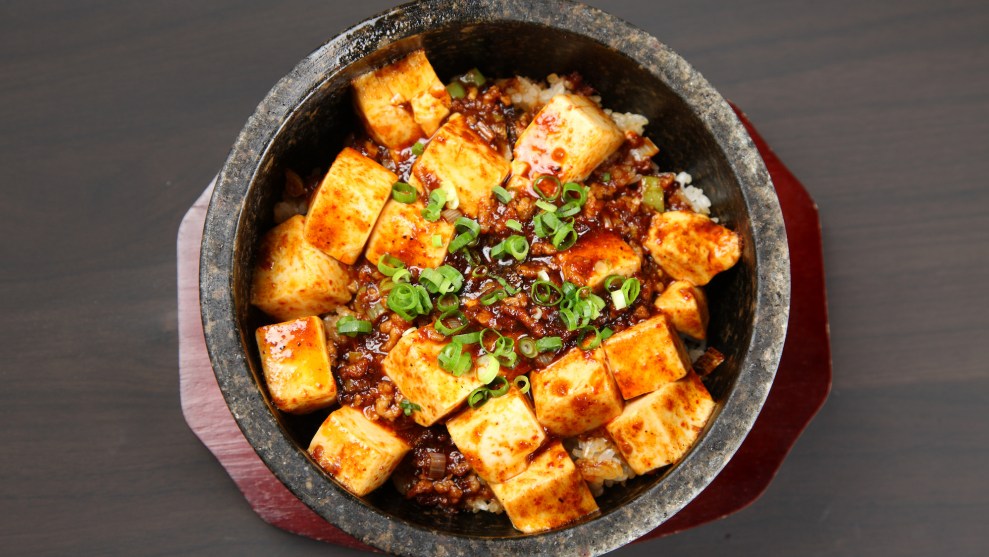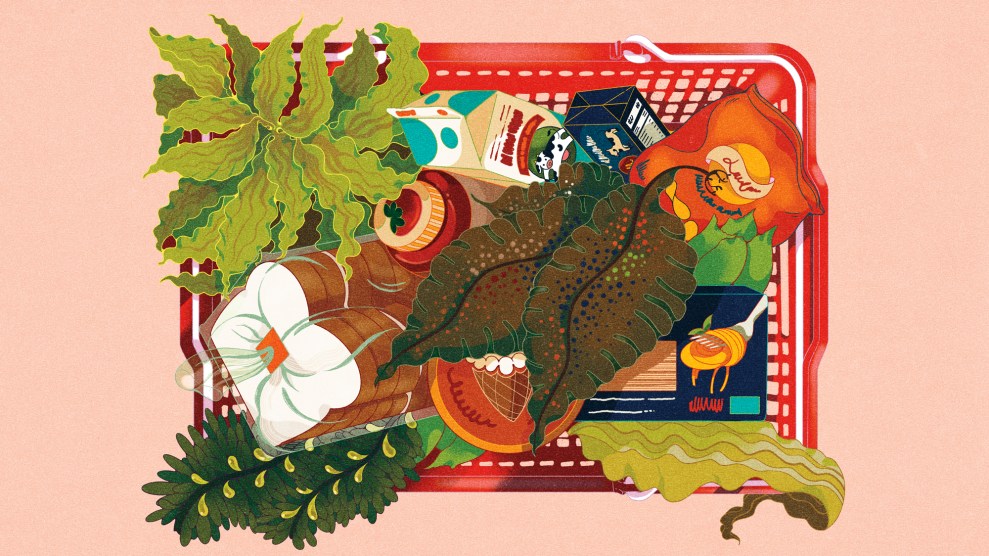
A bowl of Mapo tofu, J. Kenji López-Alt's "favorite food in the world."deeepblue/Getty
One night at Joe’s Shanghai in Manhattan’s Chinatown in the late 1990s, my friend suggested we order a tofu dish to round out the pork and greens items we had chosen. No fan of the soybean product, I went along, figuring I’d pick at the tofu and focus on the good stuff.
But mapo tofu emerged as the clear star of the table, and we ended up fighting over the last morsels: silky curd suffused with a dark, fiery, umami-bomb sauce, accented by beef and punctuated by a prickly, tongue-numbing spice that turned out to be Sichuan peppercorns. Okay, so it wasn’t vegetarian. But that night, I finally got tofu, and mapo tofu became a favorite during my time in New York. Lesson learned: The many culinary traditions throughout regions of Asia, where tofu originated two millennia ago, have everything to teach eaters like me about a delicacy I’d unjustly questioned.
I was reminded of tofu’s exquisite potential during my recent interview with J. Kenji López-Alt. He’s a giant in the food world: chef-restaurateur (Wursthall in San Mateo, California), author (of the celebrated Food Lab cookbook), and food-science expert (chief culinary consultant for Serious Eats). In our conversation, captured in a recent episode of Bite, he dropped definitive and comforting science on staying virus-free while eating during the pandemic—and delivered an insider’s view of what it means to reopen restaurants even as the pandemic lingers and COVID-19 testing lags.
At the end of our conversation, when I asked about his go-to comfort food, López-Alt didn’t hesitate: “Mapo tofu is my favorite food in the world. We always have tofu at home. Like, a lot of it.” He added that he loved the classic version of the dish from its place of origin, Sichuan, China (where it was apparently invented by a Mrs. Chen in a small eatery in 1862), but that when he was a kid, his mom would make a Japanese-inflected version with leftover beef dumpling filling, tweaked with sake and mirin in place of Sichuan condiments. (He said he had never written out a recipe for Japanese-style mapo tofu, but he promised me he’d make it soon on his YouTube channel.)
Just his mention of mapo tofu transported me to that long-lost moment in lower Manhattan—and launched a craving that could only be satiated one way during lockdown. I was thrilled to find on Serious Eats a recipe by López-Alt for “Real-Deal Mapo Tofu.” With his permission, I’ve pasted it below. First, a few notes on a novice’s experience with this dish:
• By far the most complicated part of this simple and elegant recipe is assembling the ingredients. At an excellent pan-Asian market near me, I found the fermented and umami-packed chili-bean paste called doubanjiang; the all-important Sichuan peppercorns, sold under the evocative name dried prickly ash; the Chinese cooking wine, Xiaoxing; and dark soy sauce. For the meat, I used ground pork because that’s what I had but it really is just an accent in the dish, and López-Alt also offers a vegan version, replacing meat with mushrooms. Confession: I left out the chili oil, instead adding a lashing of crushed chili flakes to ramp up the heat. On Serious Eats, López-Alt notes “you can make your own by toasting a cup of whole hot dried Chinese peppers in a wok until lightly charred, then adding 1 1/2 cups of vegetable or canola oil. Heat the oil until the chilis start to bubble slightly, then allow to cool and transfer to a sealable container.” I will do so, soon.
• Too often, US cooks slice tofu thin and roast it to the leather stage, hoping that it will mimic meat. Here, tofu is allowed to be what it is: a delicate, quivering curd that releases the flavor of its sauce as it melts in your mouth. I regret every bad thing I’ve ever said about tofu. Note well: “Use tofu labeled ‘silken’ in a hardness range of medium to firm,” López-Alt warns. “Don’t try this with the super-soft stuff or it’ll fall apart!”
• Mapo tofu exemplifies the importance of what the French call mise en place, the craft of getting everything together before you execute the dish. This recipe is dead simple and fast once you’ve got the peppercorns toasted, oil infused, tofu par-boiled, condiments and corn starch mixed, garlic and ginger grated, scallions sliced. Enjoy!
Real-Deal Mapo Tofu Recipe
By J. Kenji López-Alt
Reprinted from Serious Eats with permission of the author
- 2 tablespoons Sichuan peppercorns, divided
- 1/4 cup vegetable oil
- 1 teaspoon cornstarch
- 2 teaspoons cold water
- 1 1/2 pounds medium to firm silken tofu, cut into 1/2-inch cubes
- 1/4 pound ground beef
- 3 garlic cloves grated on a microplane grater
- 1 tablespoon fresh ginger grated on a microplane grater
- 2 tablespoons fermented chili bean paste (doubanjiang)
- 2 tablespoons Xiaoxing wine
- 1 tablespoon dark soy sauce
- 1/4 cup low-sodium chicken stock
- 1/4 cup roasted chili oil (see note)
- 1/4 cup finely sliced scallion greens
Directions
1. Heat half of Sichuan peppercorns in a large wok over high heat until lightly smoking. Transfer to a mortar and pestle. Pound until finely ground and set aside.
2. Add remaining Sichuan peppercorns and vegetable oil to wok. Heat over medium high heat until lightly sizzling, about 1 1/2 minutes. Pick up peppercorns with a wire mesh skimmer and discard, leaving oil in pan.
3. Combine corn starch and cold water in a small bowl and mix with a fork until homogeneous. Bring a medium saucepan of water to a boil over high heat and add tofu. Cook for 1 minute. Drain in a colander, being careful not to break up the tofu.
4. Heat oil in wok over high heat until smoking. Add beef and cook, stirring constantly for 1 minute. Add garlic and ginger and cook until fragrant, about 15 seconds. Add chili-bean paste, wine, soy sauce, and chicken stock and bring to a boil. Pour in corn starch mixture and cook for 30 seconds until thickened. Add tofu and carefully fold in, being careful not to break it up too much. Stir in chili oil and half of scallions and simmer for 30 seconds longer. Transfer immediately to a serving bowl and sprinkle with remaining scallions and toasted ground Sichuan pepper. Serve immediately with white rice.













